Merely attracting visitors to your website isn’t enough anymore; with stiff competition across the board, converting those visitors into loyal customers is paramount. This is where Conversion Rate Optimization (CRO) becomes an indispensable component of a successful digital marketing strategy.
CRO involves systematically improving your website or landing page experience based on visitor behavior and feedback to increase the percentage of visitors who complete a desired action, whether that’s making a purchase, signing up for a newsletter, or any other valuable engagement.
Integrating Artificial Intelligence (AI) into CRO strategies has revolutionized how businesses analyze data and implement optimizations. AI-powered CRO tools can process vast amounts of data to uncover patterns and insights that might be missed by traditional analysis. They enable personalized user experiences, predictive analytics, and automated testing, all aimed at increasing conversion rates efficiently.
In the words of Theano Dimitrakis, our Director of Analytics, “AI is turning CRO into a living, learning system—personalizing experiences in real time, predicting what converts, and automating optimization at scale.”
In this blog post, we’ll explore some of the top AI-driven CRO tools that can help elevate your website’s performance and boost your bottom line.
Top 10 AI Tools for CRO
1. Glassbox
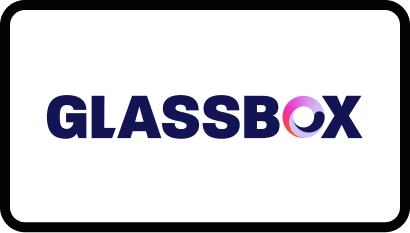
Glassbox offers a comprehensive suite of tools designed to support your CRO strategy by capturing and analyzing user interactions. The AI-powered Glassbox Insights Assistant (GIA) can further enhance your CRO efforts by providing rapid, actionable insights into user behavior and website performance.
With an intuitive, chat-based interface, users can access immediate summaries of information and data like user sessions and key interactions, like clicks and scrolls. With this straightforward data access, marketing teams can quickly identify and craft plans for addressing user pain points without complicated dashboards.
Key Features
- Friction Point Identification: By analyzing user interactions, GIA quickly pinpoints areas where users encounter friction, assesses the business impact, and helps prioritize improvements that will most effectively enhance the user experience and boost conversions.
- Chat-Based Interface: With GIA’s intuitive, chat-based interface, users can search for specific sessions or data points using everyday language.
- Intuitive Platform: GIA empowers all team members, regardless of technical expertise, to access and interpret data.
- Report Summarization: GIA can distill complex reports into concise, actionable insights, enabling teams to understand performance metrics and user behaviors swiftly.
- Customer Journey Analytics: Visualize the entire customer journey to understand user behavior across digital channels.
- Session Replay: Replay user sessions to identify pain points and optimize the user experience.
- Interaction & Heatmaps: Visual representations of user interactions on web pages, highlighting areas of interest and potential improvement.
Pricing
Contact Glassbox’s sales team for pricing.
2. Heap
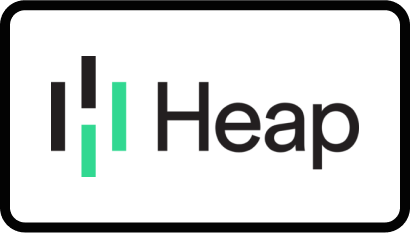
Heap is a comprehensive digital insights platform designed to automatically capture and analyze user interactions across websites and mobile applications. By providing a complete understanding of customer journeys, Heap enables businesses to enhance conversion rates, boost retention, and elevate overall user satisfaction.
Heap now offers an AI CoPilot feature that’s designed to make data analytics even more accessible – regardless of the user’s technical expertise. With Heap’s AI CoPilot, users can ask questions in plain English and receive clear answers and analyses of the data. CoPilot can also generate summaries and descriptions of charts and data visualizations, so anyone you’re sharing it with can quickly understand the data.
Key Features
- Automatic Data Capture: Heap’s single snippet implementation captures every user action across all platforms without manual event tagging.
- Funnel Analysis: Heap allows businesses to define and analyze conversion funnels, identifying stages where users drop off.
- User Segmentation: By segmenting users based on behavior, demographics, or other attributes, Heap helps tailor experiences to different audience groups.
- Journey Maps: Heap’s Journey Maps provide a visual representation of the various paths users take within a product, highlighting key interactions and potential friction points.
- Session Replay: This feature enables teams to watch real user sessions, offering context and deeper insights into user behavior.
- Natural Language Interaction: Users can ask CoPilot questions in plain English to better understand different aspects of the data, and the AI assistant will run the necessary analyses to provide clear answers.
- Auto-Generated Chart Summaries: CoPilot automatically generates names and plain-language descriptions for charts, facilitating easy sharing and quick understanding among team members.
- Suggested Follow-Ups: After an initial analysis, CoPilot offers relevant follow-up questions to delve deeper into the data, promoting iterative exploration.
Pricing
Start a free trial or contact Heap’s sales team for custom session pricing.
3. VWO

VWO (Visual Website Optimizer) is a digital experience optimization platform designed to help businesses analyze user behavior, run experiments, and personalize content to enhance conversion rates.
VWO’s Copilot is an AI-driven assistant designed to streamline the optimization process by automating tasks and providing intelligent insights. It relies on enterprise versions of OpenAI’s and Gemini’s AI models, and it’s designed to take the heavy lifting out of website optimization by offering suggestions on what to test and even creating usable variations.
The AI analysis of user behavior data can also help teams uncover new or untapped audience segments that they have yet to target, highlighting additional optimization opportunities.
Key Features
- A/B and Multivariate Testing: VWO enables businesses to create and run A/B and multivariate tests to compare different versions of web pages, app screens, or page elements to identify the most effective design or content variations for boosting conversions. Copilot can suggest and generate variations for testing.
- Heatmaps and Session Recordings + Analysis: VWO provides visual representations of user interactions and records user sessions to identify pain points and areas for improvement on your website or app. Copilot can summarize heat map and session recording data to unlock insights in seconds.
- Personalization: Deliver tailored experiences to specific user segments based on behavior, demographics, or other attributes.
- Survey Form Automation and Analytics: Copilot streamlines the process of survey creation by generating relevant questions based on your objectives and provides key takeaways and improvement recommendations with a single click.
- Hypothesis Generation: Copilot analyzes user behavior patterns using AI to deliver interesting insights and propose actionable optimization ideas, creating a continuous testing pipeline with AI-generated suggestions.
Pricing
Explore VWO’s pricing plans, based on individual products and monthly tracked users.
4. OptiMonk
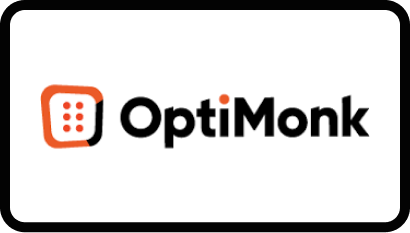
OptiMonk is a CRO platform designed to help businesses enhance website performance by engaging visitors through personalized popups, website personalization, and A/B testing. OptiMonk has now introduced AI capabilities intended to enhance website personalization efforts and make testing and optimization easier than ever.
OptiMonk’s AI features focus mainly on generating multiple variations of copy for headlines, descriptions, and titles. These features can be applied to different types of content, with functionalities for web pages, popups, and advertisement landing pages.
Key Features
- Smart Popups: Utilizing AI, OptiMonk’s Smart Popups automatically customize messaging based on each visitor’s interests and behavior. There are all types of customizable popup formats, including exit-intent popups, lead generation popups, and product recommendation popups.
- Website Personalization: This feature allows businesses to tailor website content to specific customer segments without any coding. It can be used to display custom text elements and call-to-action buttons based on factors like traffic source or visitor behavior.
- Smart A/B Testing: OptiMonk’s AI automates the A/B testing process by creating variants, running tests, and analyzing results without manual intervention. OptiMonk allows A/B testing of both popup campaigns and landing pages.
Pricing
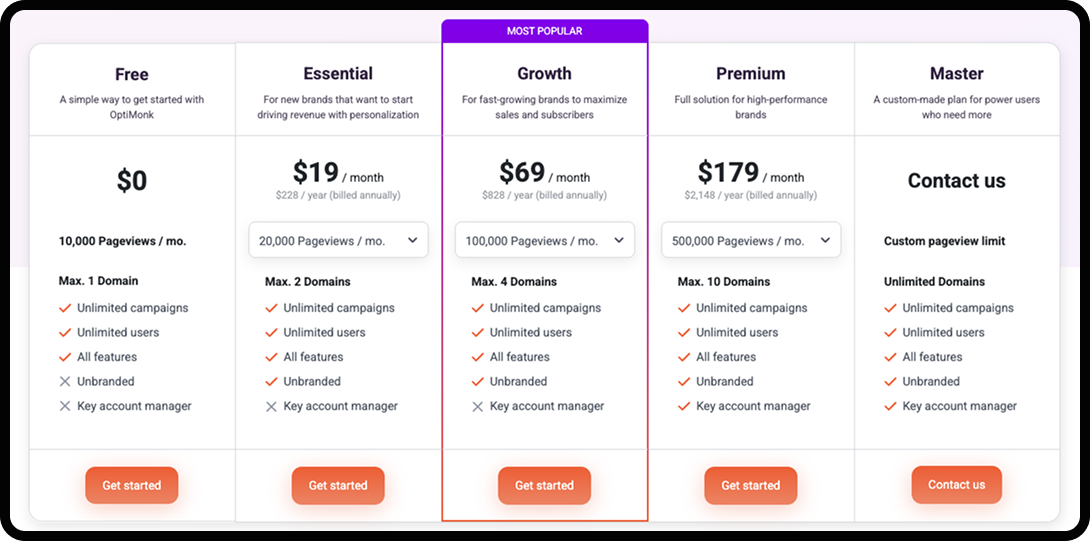
5. Hotjar
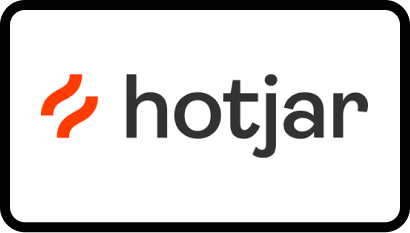
Hotjar is a user behavior analytics platform designed to help businesses understand how users interact with their websites and digital products. By providing tools like heatmaps, session recordings, and surveys, Hotjar enables teams to gain valuable insights, identify pain points, and optimize the user experience to enhance conversion rates.
Hotjar has now integrated AI into its survey tools to help streamline the creation and analysis of surveys. New surveys can be launched in seconds, and reports on survey responses can be generated with just a couple of clicks. Concise reports can help teams identify insights, pull out key quotes, and make decisions about what to do next for successful user-led product updates.
Key Features
- Heatmaps: Visual representations of user interactions, such as clicks, taps, and scrolling behavior, help identify which areas of a webpage attract attention and which are ignored.
- Session Recordings: By recording real user sessions, Hotjar provides a playback of user journeys, enabling teams to observe navigation patterns, identify usability issues, and understand user behavior on a granular level.
- AI-Generated Surveys: Users can input their research goals, and Hotjar’s AI will generate relevant survey questions automatically. This feature accelerates the survey creation process, ensuring that questions are aligned with the intended objectives.
- Automated Response Analysis: After collecting survey responses, Hotjar’s AI can analyze open-ended answers to provide sentiment analysis, automated tagging, and summary reports.
Pricing
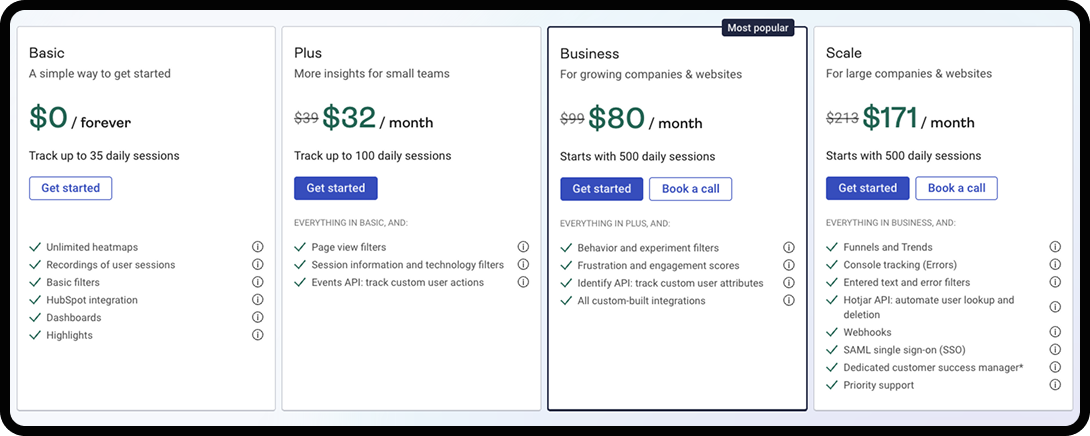
6. Unbounce
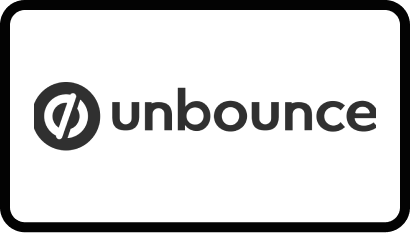
Unbounce is a leading landing page builder and conversion optimization platform designed to help marketers create, publish, and test high-converting landing pages without the need for coding skills.
Here at NoGood, we’ve used Unbounce to help our clients. “Unbounce is taking the guesswork out of CRO,” Dimitrakis explains, “automatically matching visitors with the best experience and driving higher conversions without constant manual testing.”
Unbounce’s Smart Traffic is an AI-driven optimization tool designed to enhance conversion rates by automatically directing visitors to the landing page variant most likely to convert them. The tool analyzes visitor attributes, like their location, device type, and referral source, to determine which landing page variant is the most relevant to them. It then directs them there. It can learn and adapt in real time to ensure each visitor has a positive, personalized experience.
Key Features
- Drag-and-Drop Landing Page Builder: Unbounce provides an intuitive drag-and-drop editor and access to a wide range of customizable templates, allowing users to design and customize landing pages effortlessly.
- A/B Testing: Unbounce offers built-in A/B testing capabilities, enabling users to create multiple variants of a landing page and test different elements such as headlines, images, and calls-to-action.
- Popups and Sticky Bars: Unbounce allows the creation of targeted popups and sticky bars that can be customized to display personalized messages, offers, or lead capture forms based on user behavior and segmentation.
Pricing
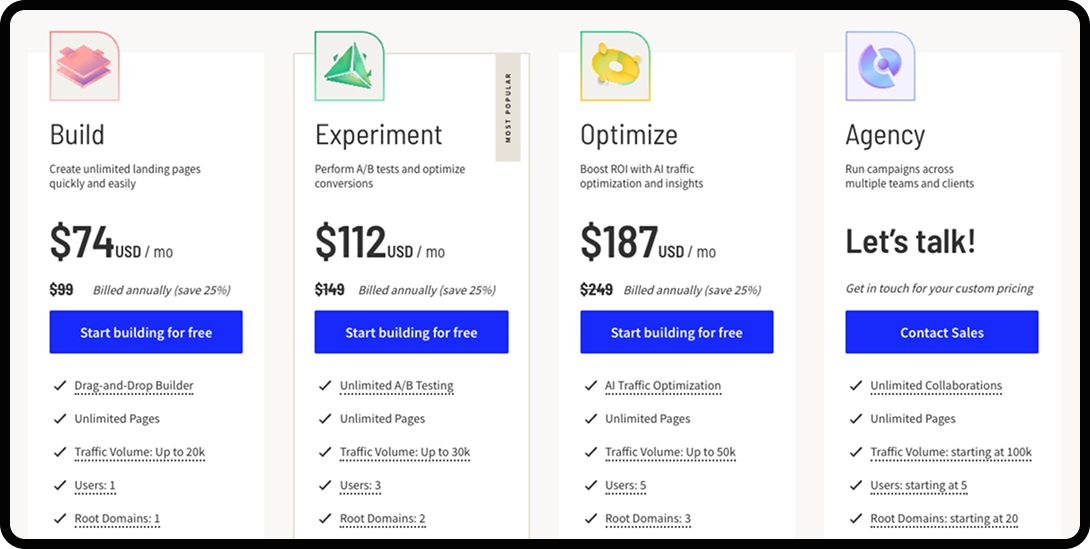
7. Attention Insight

Attention Insight is an AI-powered design analytics platform that predicts how users will visually engage with your content. By simulating eye-tracking studies, it provides insights into which elements of a design are likely to capture attention, enabling businesses to optimize their layouts and improve conversion rates before launching.
The platform includes AI-powered, predictive heatmaps, and it can calculate differences in the attention that different design or page elements receive to guide teams in understanding which aspects of a page are most engaging.
Key Features
- Predictive Heatmaps: Attention Insight generates heatmaps that predict user attention distribution with up to 96% accuracy compared to traditional eye-tracking studies.
- Areas of Interest (AOI) Analysis: The platform calculates the percentage of attention different design elements receive, helping teams understand which components are most engaging and which may need enhancement.
- Clarity Score: This metric evaluates the overall clarity of a design, indicating how easily users can process and understand the presented information. A higher clarity score suggests a more user-friendly design, which can lead to better conversion rates.
- Design Comparison: Attention Insight allows for side-by-side comparisons of different design versions, enabling teams to assess which iteration is more effective in capturing user attention. This feature is particularly useful for A/B testing and refining design choices.
- Integration with Design Tools: The platform integrates seamlessly with popular design tools like Adobe XD, Sketch, and Figma, allowing designers to analyze and optimize their work within their preferred environments.
Pricing
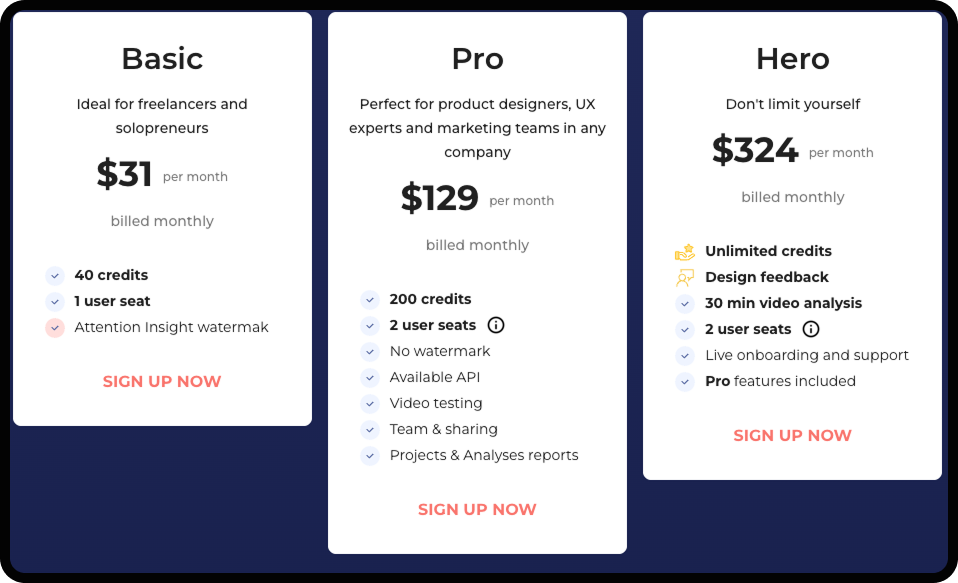
8. Evolv AI
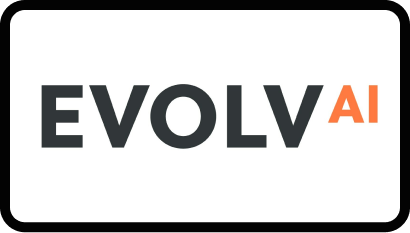
Evolv AI is an advanced platform specializing in AI-driven experience optimization, designed to enhance conversion rates by continuously testing and personalizing digital experiences across various customer touchpoints.
Evolv AI boasts a number of AI-powered features. The platform employs machine learning algorithms to conduct experiments and evaluate multiple variations to identify and prioritize the most effective combinations and ensure users receive an optimal experience. It can also use AI to analyze user data to create segments and tailor experiences to meet specific needs.
Key Features
- Continuous Optimization: Evolv AI conducts experiments and performs evaluations of variants in real time to always serve the more effective combinations.
- Automated Segmentation: AI-powered data analysis automatically identifies distinct audience segments to inform tailored web experiences.
- Active Learning: Evolv AI incorporates active learning methodologies, enabling the system to adapt to user interactions dynamically. The platform remains responsive to changing user behaviors and preferences.
- Multivariate Testing: Evolv AI’s multivariate testing capabilities allow for the simultaneous evaluation of multiple variables. This comprehensive approach provides deeper insights into how different elements interact and contribute to user engagement and conversions.
- Flexible Implementation: Evolv AI offers a flexible implementation process, utilizing generative AI to interpret design and content ideas efficiently. The platform produces production-ready code for testing on websites.
Pricing
Contact Evolv Ai’s sales team to schedule a demo and understand pricing.
9. Optimizely
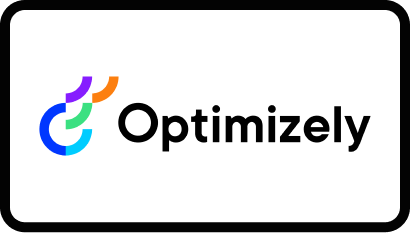
Optimizely is a comprehensive Digital Experience Platform (DXP) designed to help businesses optimize their digital presence and enhance customer experiences across various touchpoints. It offers a suite of tools for content management, commerce, and real-time intelligence, enabling personalized interactions at scale.
Their Web Experimentation product with AI capabilities provides marketers with critical insights from precise A/B testing to create high-performing web experiences that lead to increased conversions for businesses. The platform includes collaboration tools, design features, and intuitive interface for building tests, and precise reports for effective analytics.
Key Features
- A/B Testing: Optimizely provides robust A/B testing capabilities, allowing businesses to compare different versions of web pages, app interfaces, or marketing messages to determine which performs better in terms of predefined metrics.
- Multivariate Testing: Beyond simple A/B tests, Optimizely supports multivariate testing, which helps identify the most effective combination of elements on a page to maximize conversions.
- Personalization: Optimizely’s robust personalization engine allows businesses to deliver targeted content and experiences to specific audience segments based on their behaviors and interests.
- Optimizely Opal: Opal is Optimizely’s AI assistant that aids marketers throughout the entire marketing lifecycle. It assists in ideating and generating content, automating administrative tasks, and providing instant insights. For instance, Opal can suggest campaign topics based on past performance data, generate campaign-specific assets like images and social posts, and recommend audience segments for targeting.
- Content Recommendations: Utilizing Natural Language Processing (NLP), Optimizely’s Content Recommendations feature analyzes your content in real-time, enabling personalized user experiences with minimal manual effort. It automatically tags content and provides insights into which topics drive conversions, allowing businesses to focus on creating content that resonates with their audience.
Pricing
Request pricing based on product.
10. Microsoft Clarity
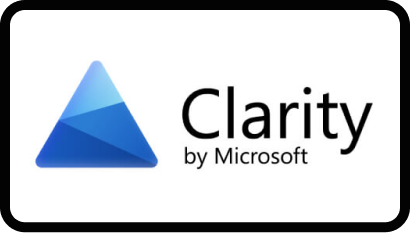
Microsoft Clarity is a free, user-friendly behavioral analytics tool designed to help website owners and marketers understand how users interact with their websites. By providing visual insights into user behavior, Clarity enables data-driven decisions to enhance user experience and boost conversion rates.
Clarity integrates artificial intelligence to enhance its analytics capabilities. With Microsoft Copilot integrated into Clarity, you can simply type your question about your data analysis, and Copilot will generate a response based on your project’s dashboard data. With easy, conversational, natural language, you can quickly discover key metrics and trends and even ask for suggestions on how to make improvements.
Key Features
- Heatmaps: Clarity offers various heatmaps that visually represent user engagement, including click heatmaps (where users click the most), scroll heatmaps (how far users scroll on the page), area heatmaps (clicks within a specific area), and conversion heatmaps (elements that drive purchases).
- Session Recordings: Clarity provides session recordings that allow you to watch real user interactions on your website. This feature helps identify navigation issues, understand user behavior, and uncover obstacles hindering conversions.
- Insights Dashboard: The insights dashboard offers a summary of key metrics and trends, such as visitor numbers, session durations, and page views. It helps monitor website performance and user engagement, facilitating data-driven decisions to improve conversion rates.
- Smart Events: Clarity automatically tracks important user actions, like purchases or form submissions, allowing you to focus on the conversions that matter most. You can also create custom events without any code, making it accessible for users without technical expertise.
- Copilot: Clarity’s Copilot is an AI-powered suite that helps users understand website visitor interactions through features like session replay insights, heatmap insights, and dashboard chat. It provides instant, easy-to-understand answers to your dashboard questions, helping you better understand your project data.
Pricing
Microsoft Clarity is free, forever.
Embracing AI for Superior CRO Results
These advanced tools analyze extensive datasets to uncover patterns and insights that might be overlooked through traditional methods. By leveraging AI, businesses can personalize user experiences, automate testing processes, and make data-driven decisions that enhance user engagement and significantly boost conversion rates.
“The future of CRO isn’t just testing,” Dimitrakis says, “it’s AI-driven adaptability. Brands that embrace machine learning will deliver hyper-personalized, self-optimizing experiences that convert faster and smarter.”
Embracing these technologies positions your business to adapt swiftly to evolving market demands, ensuring sustained growth and a competitive edge.
FAQs
How does AI help with CRO?
Here’s how AI contributes to effective CRO:
- Advanced Data Analysis: AI algorithms can process vast amounts of data at high speed, identifying patterns and trends that may not be evident through manual analysis. This capability allows businesses to make data-driven decisions with greater confidence and precision.
- Personalized User Experiences: By analyzing user behavior and preferences, AI enables the creation of personalized content and product recommendations. This personalization enhances user engagement and increases the likelihood of conversions.
- Predictive Analytics: AI-powered tools can predict future user behaviors based on historical data, allowing businesses to proactively optimize their websites and marketing strategies to meet anticipated customer needs.
- Automated A/B Testing: AI streamlines the A/B testing process by automatically creating and evaluating multiple variations of web pages or content. This automation accelerates the identification of the most effective elements, leading to quicker optimization cycles.
- Real-Time Adaptation: AI systems can adapt to user interactions in real-time, modifying content or offers instantly to align with individual user behavior, thereby increasing the chances of conversion.
What data does AI use for CRO?
AI analyzes a diverse array of data to understand user behavior and improve website performance. Key data types utilized by AI in CRO include:
- User Interaction Data: This encompasses metrics such as click-through rates, time spent on pages, navigation paths, and conversion actions. AI analyzes these interactions to identify patterns and areas where users may encounter obstacles, enabling targeted optimizations.
- Demographic and Geographic Data: Information about users’ age, gender, location, and language preferences helps AI tailor content and offers to specific audience segments, enhancing personalization and relevance.
- Device and Browser Information: Data on the devices and browsers used by visitors allow AI to ensure compatibility and optimize the user experience across different platforms, which is crucial for maintaining engagement and reducing bounce rates.
- Referral and Traffic Source Data: Understanding where visitors come from — such as search engines, social media, or direct visits — enables AI to assess the effectiveness of various marketing channels and adjust strategies accordingly.
- Historical Data: AI leverages past user behavior and conversion data to predict future trends and inform decision-making processes, facilitating proactive optimization efforts.
- A/B and Multivariate Testing Data: Results from testing different versions of web pages or elements provide AI with insights into what variations perform best, allowing for continuous improvement through iterative testing.
Is AI-based CRO compliant with data privacy laws like GDPR and CCPA?
Since most AI tools and effective CRO strategies rely heavily on data collection, keep these considerations in mind to ensure any tools being used comply with data privacy regulations such as the General Data Protection Regulation (GDPR) and the California Consumer Privacy Act (CCPA):
- Data Transparency: Clearly inform users about the data being collected, its purpose, and how it will be used. Providing concise and accessible descriptions of data collection practices helps maintain transparency and build trust.
- User Consent: Obtain explicit consent from users before collecting or processing their personal data. Both GDPR and CCPA emphasize the importance of user consent, especially when data is used for personalized experiences or marketing purposes.
- Data Minimization: Collect only the data necessary for the intended purpose. Avoid gathering excessive information that isn’t directly relevant to your CRO objectives.
- Security Measures: Implement robust security protocols to protect user data from breaches or unauthorized access. Regular security audits and risk assessments can help identify and mitigate potential vulnerabilities.
- Ethical AI Use: Ensure that AI algorithms are designed and used ethically, avoiding biases and respecting user privacy. Regularly review AI models to prevent unintended consequences and maintain fairness in decision-making processes.
How does AI improve A/B testing?
AI serves as a critical tool for more effective A/B testing due to its capabilities in generation, personalization, predictive modeling, and advanced data analysis.
When designing your A/B test, you can leverage AI for automated variant generation with multiple different versions to personalize pages for different audiences. AI can automatically create multiple variations of content – such as headlines, images, or calls-to-action – for testing, and with AI-enabled audience segmentation, you can implement more personalized testing. By tailoring variations to specific user segments, businesses can achieve more relevant and effective optimizations, leading to improved user experiences and higher conversion rates.
AI’s advanced data analysis functionalities can also help support more effective A/B tests. In traditional A/B testing, traffic is usually evenly distributed between variants, but with AI-driven testing, you can dynamically adjust traffic distribution in real time to direct more visitors to higher-performing variants as data is collected.
Then, after the test is complete, AI can help evaluate complex interactions between different variables to provide deeper insights into user behavior and preferences.





